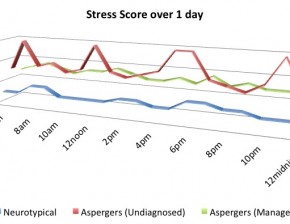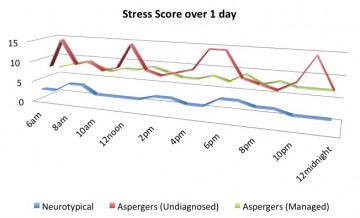Guest blog article written by Sam Warner of Get Your Message Across.
ASD (Autism Spectrum Disorder) isn’t a great label, but it does help to describe a differently-brained set of people that might need a little extra help to be their best at work. Only 15% of all diagnosed adults in UK are in work, and only 10% of those feel supported, respected and safe from ridicule at work.
This is Part 1 of a two part blog and hopes to go someway to helping employers to understand some things they could do to improve the working environment for someone with ASD and get the very best out of a happy, comfortable and productive employee.
1. ASD and Interviews
It will be very rare for someone with ASD to ring up a prospective employer and ask them to adjust their interview style from open-ended questions to direct questions; when that’s exactly what they need. If an interviewee is avoiding eye contact, stimming (also see no.7 next month), and/or fidgeting and might seem to struggle with that first common question “Tell me about yourself”, then you can try another tack of changing to direct questions instead. If the person relaxes before you, you know you are on the right track.
2. ASD and Stress
Imagine a graph where those not on the spectrum live with an anxiety level daily at about 3 or 4 out of 10, so as the day progresses they can accommodate new stressful things without having a breakdown (usually) and those on the spectrum are probably living with a 8 or 9 out of 10 all day with several meltdowns along the way as life and every decision can be really stressful and pushes them over the edge easily. Managing that stress allows them to shine as they can do great quality work in a comfortable place and be themselves.
3. ASD and Environment
For a lot of people with ASD, open plan offices provide a very challenging environment, from open or closed windows, or any challenges for the senses (see no.4) to feeling “safe” sitting with their back to the wall and being able to see the door. If moving desks for the third time this year is really stressful to the employee, ask yourself, is it really necessary? If it is possible to make someone a bit more comfortable at work, why wouldn’t you do that?
4. ASD and Senses
There are certain distractions that can bother those on the spectrum to the point of meltdown or irritation (leading to inappropriate behaviour in the work place):
a) Sight: Direct sunlight can cause a reaction to the light, the heat and reflections on other items in the office.
b) Smells: Pungent food being cooked in microwaves or brought in at lunchtime can be really uncomfortable for someone with a sensitive nose.
c) Touch: well we all know that in the workplace touching someone else is not on unless they consent. There are some on the spectrum who hate to be touched at all, and pull away violently, (often seen as an over-dramatic response). Those that need human contact to feel accepted and might be perceived as too “touchy-feely” might need to be coached on what is appropriate in the office.
d) Taste: Probably the smallest problem in the workplace but when combined with other events contributes to elevated stress levels.
e) Sound: A clicking pen, a tapping foot, a strimmer outside the window, a ticking clock, the faint sound of music from a pair of headphones. Any number of these and more might cause distress to someone on the spectrum, often as part of an already anxious state, including overheard conversations, ringing phones, people typing and squeaky chairs!
5. ASD plus Routine and Rules
Many of those with ASD prefer a solid routine with clear deadlines. They are likely to be very reliable as long as the instructions have been made really clear. Checking up on someone (unless checkpoints have been previously agreed) can be detrimental and take away confidence, so there’s an element of trust that needs to be forged early on in the employer/employee relationship. Sometimes someone with ASD might be a real stickler for the rules, and their superior can coach them on when it’s acceptable to bend those rules to assist with team harmony.
I know all of this sounds like a lot of work, but if you think about it, a lot of this advice can be applied to any human regardless of the way their brain processes information. For a small amount of initial effort, a harmonious team, greater understanding and a productive employee can be gained by employing someone with ASD.
See part two next month, for:
6. The Unexpected and Meltdowns
7. Behaviour and Stimming
8. Eye contact and Language
9. Feedback and Evaluation
10. Reward and Recognition
Sam is the successful business owner of Get Your Message Across, which helps people who are terrified of speaking in front of others to find their voice. Sam coaches, trains and evaluates individuals to increase their confidence and actually look for opportunities to speak in the future. She also helps adults and children with Autism (ASD)/Asperger’s and their friends and family to communicate better, find coping mechanisms for various behavioural problems and challenging situations.
If you would like to know more about Sam’s work and how she can help you and your staff, please give her a call on: 07973 490150 or email her: samantha_warner@hotmail.com


